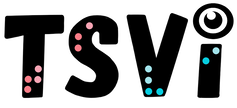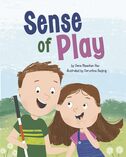- Home
-
Learn
- History of VI >
- Legislation & Laws >
- Vision Professionals >
-
VI Program Resources
>
- Program Printables
- Itinerant Teaching Tips
- Year at a Glance
- VI Program Handbook
- Caseload Analysis
- Organization & Time Management
- Professional Development
- Teacher Standards
- Professional Ethics
- Awards & Recognition
- APH Scholar Program
- Professional Organizations
- Certification Organizations
- Dealing with Challenges
- Professional Publications >
- Relatable Books for All Ages >
- Family Resources >
- Plan
- Basics
-
Teach
- Teaching Strategies >
-
Compensatory Skills Instruction
>
-
Social Skills
>
-
Self Determination
>
- Body Image & Acceptance
- Making Personal Goals
- My Vision Presentation
- My Self-Description
- Create a Personal Data Sheet
- Disclosure Decision
- Disability Statement
- Requesting Help
- Fighting Fears
- My Circle of Support
- Personal Responsibility
- Advocate for Safe Enviroments
- Having Picture Taken
- Coping with Change
- Aging Eyes
- Physical Characteristics
- Political Activism
- Laws Regarding Persons with Disabilities
-
Sensory Efficiency
>
-
Independent Living
>
- Orientation & Mobility Instruction >
- Recreation & Leisure >
-
Career & Vocation
>
-
Grow
- Complete Set Bonus >
-
Recorded Presentations
>
- Webinar: Tips for Being a "Physically Fit" TVI
- Webinar: The Art of Teaching the ECC
- Webinar: Virtual & F2F Strategies
- Webinar: Foundations of Teaching the ECC in the Age of Virtual Instruction
- Webinar: Itinerant Teaching Strategies
- Webinar: Using Themes to Teach the ECC
- Webinar: Conducting a FVLMA
- Webinar: Selecting the Right AT
- Webinar: Developing SMARTER Goals
- Webinar: Determining Service Intensity Using the VISSIT
- Webinar: Activities to Teach the ECC
- Webinar: Accessible Content for BLVI
- Webinar: Accommodations for VI
- Webinar: MIMO Strategies & Activities
- Webinar: SIDPID Strategies & Activities
- Webinar: Standard Course of Study Strategies & Activities
- Webinar: Job Tasks for Job, Career & Life
- Shop
- Jobs
Children's BooksThe following children's books are about people who are blind or visually impaired or are impacted by those with visual impairments. If there are other books you would like to see here, please let me know so I can add them.
Affiliate Link DisclaimerTeaching Students with Visual Impairments is a participant in the Amazon Services LLC Associates Program, an affiliate advertising program designed to provide a means for sites to earn advertising fees by advertising and linking to amazon. As an affiliate, I earn from qualifying purchases. While I appreciate your support, please compare prices from other retailers that sell these products. Thank you in advance for your support! A Picture Book of Helen Keller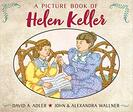
Adler, David A. A Picture Book of Helen Keller (Picture Book Biography). Holiday House, 1992. Ages 6 and up. The biography of Helen Keller who became both blind and deaf. The story of her childhood, how Annie Sullivan taught her and the impact and achievements she made.
A Picture Book of Louis Braille
Adler, David A. A Picture Book of Louis Braille (Picture Book Biography). Holiday House, 1998. Ages 6 and up. Presents the life of the nineteenth-century Frenchman, accidentally blinded as a child. Later, he created the raised dot system of reading and writing used throughout the world by the blind.
She Touched the World: Laura Bridgman, Deaf-Blind Pioneer
Alexander, Sally Hobart. She touched the World: Laura Bridgman, Deaf-Blind Pioneer. Clarion Books, 2008. Ages 8 and up. The story of Laura Bridgman who, at the age of two, lost her sight, her hearing, and most of her senses of smell and taste. The biography shows how Laura paved the way for future generations of children with disabilities, making important advances in the way they would be educated.
Blueberry Eyes
Beatty, Monica Driscoll. Blueberry Eyes. Health Press, 1996. PreK and up. Blueberry Eyes is a book that addresses many aspects of eye treatment, such as wearing glasses, eye patches, or undergoing eye muscle surgery. The book also touches on many of the feelings that a child may experience his or her eye treatment. Not only does it educate, but it reassures small patients and lets them identify with a heroine who is "just like me!"
Painting in the Dark
Burk, Rachelle. Painting in the Dark. Tumblehome learning inc, 2016. A biography of Esref Armagon, an artist who has been blind since birth. Esref began drawing at a young age to understand and feel connected with his world. The story describes the strategies Esref used along with a determination to learn about color, create dimension and scale. Like many artists, Esref struggled to make an income before finding success. As he became known, researchers studied Esref and learned about how the brain can receive and learn through other senses. The story provides a realistic depiction of a personal struggle with adversity as well as success.
Seeing Things My Way
Carter, Alden. Seeing Things My Way. Whitman, Albert & Company, 1998. Amanda can't see very well. She had a tumor in her head when she was younger, and now there are blind spots when she looks at things. This book explains what it is like to be blind or visually impaired.
The Night Search
Chamberlin, Kate. The Night Search. Jason & Nordic, 1997. Heather, who is blind, resists using her cane until one night while camping her puppy wanders off. Heather tries to find her puppy. She finds a stick that helps, but she realizes that her white cane is a valuable helper.
Off to the Park!
Cheetham, Stephen. Off to the Park! Child's Play, 2014. This interactive book is adorable and perfect for young children with visual impairments. The words to describe the sounds a child may hear as they go on a walk are playful and varied throughout the book. The textures are varied and focus on materials a child may interact with on a walk (shoelaces, crosswalk button, grooves on a stick, a gravel surface, a squishy ball, linked chains of a swing, smooth slide, bumpy steps, rubber tire swing, and more). Although the book does not identify the character on a walk as a student with a visual impairment, the book was developed in consultation with children, families, and organizations working with children who are blind and visually impaired.
Sounds Like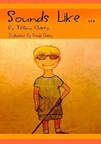
Cherry, Tiffany. Sounds Like. 2019. Have you ever wondered what objects that readily catch your eye may say if they could speak to you? That’s what the young girl in Sounds Like seeks to find out in her quest to help her visually impaired friend Nathan experience all of the beauty of her favorite things using only touch, scent, and sound. With some advice from her parents, and a precocious nature, she finds a way to make the seemingly impossible possible all in the name of friendship. Sounds Like is to be the first in a series of illustrated stories for young readers aimed at helping promote an understanding of differences, and a development of respect for diversity early on. The book is beneficial for parents and children in discovering the small things each can do to help make the world a better place.
See the Ocean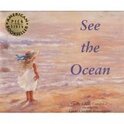
Condra, Estelle. See the Ocean. FBA power setup, 2006. Nellie loves the ocean. Every year she travels with her family over the Black Mountains to their beach house. This story is about a young girl who is blind but sees the beauty of nature with her mind and heart.
The Black Book of Colors
Cottin, Menena. The Black Book of Colors. Groundwood Books, 2008. This book allows readers to imagine living without sight through illustrations done with raised lines and descriptions of colors based on imagery. Braille letters accompany the illustrations and a full braille alphabet offers sighted readers help reading along with their fingers.
Louis Braille: The Boy Who Invented Books for the Blind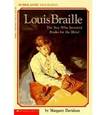
Davidson, Margaret. Louis Braille: The Boy Who Invented Books for the Blind. Scholastic, 1991. The story of Louis Braille.
Brian's Bird
Davis, Patricia Anne. Brian's Bird. Shen's Book, 2000. This is the story of eight-year-old Brian, a boy who is blind who learns how to take care of his new parakeet.
Luna and the Big Blur
Day, Shirley. Luna and the Big Blur: A Story for Children Who Wear Glasses. Luna is self-conscious of how she looks in glasses. She decides not to wear hers and gets into funny mishaps. Students who resist wearing their glasses may relate to Luna's feelings of being different, while they are also reassured that it is okay to wear glasses.
The Hickory Chair
Fraustino, Lisa Rowe. The Hickory Chair. Scranton: HarperCollins Publishers, 2001. Grades Preschool-3. "From the day he was born, Louis, who is blind, had a close relationship with his grandmother. When she dies, the powerful bond lives on in his memories of their times together. Near the end of his own life, Louis finds a special gift his grandmother left him, and the story comes full circle."
Follow My Leader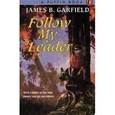
Garfield, James B. Follow My Leader. Puffin, 1994. Ages 5 and up. After Jimmy is blinded in an accident with a firecracker, he has to relearn all the things he used to know. With the help of a determined therapist, he learns to read Braille and to use a cane. then he's given the chance to have a guide dog.
Jeremy's Dreidel
Gellman, Ellie. Jeremy's Dreidel. Kar-Ben, 2012. At the dreidel-making workshop, Jeremy's friends think he's molding a secret code on his clay dreidel. But he's making a special gift for his father, who is blind.
White Cane Day
Grender, Kristin. White Cane Day. The Book Patch, 2015. This picture book was written by a TVI and O&M Instructor to explain White Cane Day and why we celebrate it. In addition to telling a story about the day, she includes information on why the white cane is important and how to follow the white cane laws. The message of the story is that Visual Impairments do not have to hold you back from success.
The Patch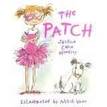
Headley, Justina Chen. The Patch. Charlesbridge Publishing, 2007. K-2nd Grade. Beccas doctor discovers that she has a lazy eye and needs a patch and glasses to strengthen her eyesight. The five-year-old is worried that the other students will think she looks stupid so, her older brother lends her his favorite pirate costume to go with her purple glasses and bright pink patch. Becca pretends to be the Ballerina Pirate, Private Eye, and One-Eyed Monster before admitting the real reason for her patch.
Apt. 3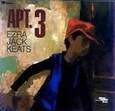
Keats, Ezra Jack. Apt. 3. East Rutherford, N.J.: Penguin Putnam Books for Young Readers, 1999. Grades Preschool-3. Two brothers living in a dingy apartment building hear the mournful sound of a harmonica. Their search for the musician leads them to a new friend, a man who is blind who teaches them about life as well as music.
Lumber Camp Library
Kinsey-Warnock, Natalie. Lumber Camp Library . Scranton: HarperCollins Children’s Book Group, 2002. Grades 2-5. Ruby wants to be a teacher when she grows up. But when her father is killed in a logging accident, she must quit school to help her mother care for her ten siblings. She is befriended by an older woman who is blind and shares her large collection of books. When Ruby begins teaching the lumberjacks to read, she realizes that she can still pursue her dream of being a teacher.
Naomi Knows It's Springtime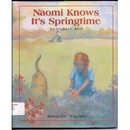
Kroll, Virginia. Naomi Knows It's Springtime. Boyds Mills Press, 1993. Naomi knows it's springtime by hearing the new sounds of the seasons, its feels and tastes.
Looking Out for Sarah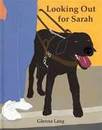
Lang, Glenna. Looking Out for Sarah. Watertown, Mass.: Charlesbridge Publishing, Inc., 2001. Grades Pre-school-3. A story about the life of Sarah, who is blind, and her guide dog Perry. The tale is told from Perry’s perspective, who accompanied Sarah on a walk from Boston to New York. The walk was intended to bring public attention to guide dogs and their role in enhancing the independence of people who are blind.
A Cane in Her Hand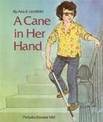
Litchfield, Ada Bassett. A Cane in Her Hand. Concept Books. Albert Whitman & Company 1987. 4 and up. "A young girl finds ways to cope with her failing vision."
A Girl Named Helen Keller
Lundell, Margo. A Girl Named Helen Keller. Cartwheel, 1995. This book describes the early life of Helen Keller.
Through Grandpa's Eyes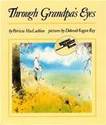
MacLachlan, Patricia. Through Grandpa’s Eyes HarperCollins, 1983. Ages 4 and up. John visits his Grandpa who is blind. His grandfather shares with him the special way he sees and moves in the world.
Knots on a Counting Rope
Martin, Bill Jr. Knots on a Counting Rope. New York: Henry Holt Books for Young Readers, 1993. Grades Pre-school-3. A campfire conversation between a Navajo boy who is blind and his grandfather. The grandfather retells the story of the night the boy was born, and together they recall the race the boy participated in with his horse. Although he doesn’t win, his grandfather tells him that he has “raced darkness and won.”
Listen for the Bus: David's Story
McMahon, Patricia. Listen for the Bus: David’s Story. Boyds Mills Press, 1995. A story of David, a kindergartner who is blind. The story touches on how he adapts to being blind and how his parents, teachers, and friends support him. Pictures show David participating in school, swinging, horseback riding, hammering, etc.
Lucy's Picture
Moon, Nicola. Lucy's Picture. Orchard Books, 2010. This is a story of Lucy who wants to make a picture for her grandpa, but she doesn't want to use the paints the rest of the children are using. Lucy's grandpa is blind, so Lucy wants to make him a very special picture with twigs, feather, velvet and sand so he can feel it with his fingers.
Buddy: The First Seeing Eye Dog
Moore, Eva. Buddy: The First Seeing Eye Dog (Hello Reader!, Level 4). Scholastic Inc., 1996. A story about the first Seeing Eye dog in America. The story follows the dog from training in Switzerland to home in America with Morris Frank, who was instrumental in starting the Seeing Eye in America in the 1930s.
Imagine Being Blind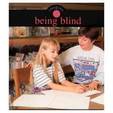
O’Neill, Linda. Imagine Being Blind. Imagine series. Vero Beach, Fla.: Rourke Publishing, 2000. Grades 1-4. Introduces children to what it’s like to be blind and shows how people maintain their independence. Discusses braille, canes, guide dogs, and assistive technology.
I Can Tell by Touching
Otto, Carolyn. I Can Tell by Touching (Let's-Read-and-Find-Out Science, Stage 1). Trophy Pr, 1994. Ages 3-6. A child experiences the world through touch..
Bettina the Bold
Page, Fiona. Bettina the Bold: A Blind Butterfly Discovers How to Make Friends. In the woods of Georgia, a Queen butterfly emerges from her chrysalis into a world of darkness. What she doesn't understand is that no matter how hard she tries, her eyes don't see. Bettina is blind
Keep Your Ear on the Ball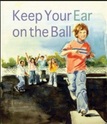
Petrillo, Genevieve. Keep Your Ear on the Ball. Davey, a boy who is blind, is very independent and capable of doing things on his own until he tries to play kickball. Nobody wants Davey to be on their team because he misses kicks and trampled the base keeper. The children are able to find a way to help Davey and realize that interdependence can be just as important and rewarding as independence.
Sense of Play
The Secret Code
Rau, Dana Meachen. The Secret Code. Danbury, Conn.: Scholastic Library Publishing, 1998. Grades K-2. NLS: BR012369 Oscar, who is blind, shows his classmates how to read braille.
Mandy Sue Day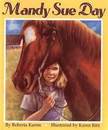
Ritz, Karen. Mandy Sue Day. Sandpiper, 2003. Ages 9 and up. A prose poem that tells how a girl who is blind uses her senses of taste, hearing, touch and smell to enjoy her day with her horse.
Sarah's Sleepover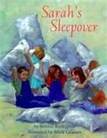
Rodriguez, Bobbie. Sarah’s Sleepover. New York: Viking Children’s Books, 2000. Grades K-4. A group of five little girls have a sleepover at Sarah’s house. The lights go off unexpectedly while her parents are visiting their neighbors, and everybody except for Sarah panics. Because of her familiarity with the dark, she calms their fears, identifies scary noises, and leads them through the house to the telephone.
Rugby and Rosie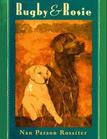
Rossiter, Nan Parson. Rugby and Rosie. Dutton, 1997. Rugby, the family's beloved Labrador retriever, finds himself unhappy with the new house guest, Rosie, a puppy brought home to be trained as a guide dog, but they soon become the closest of friends, until she has to leave to do the important work for which she is trained.
T.J.'s Story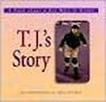
Schulman, Arlene. T.J.'s Story: A Book about a Boy Who is Blind. Lerner, 1997. A book about anine year old boy who has been blind since birth. He describes various aspects of his life, including his reading braille, his use of a cane, and the games he plays with his friends and family.
Adventures of Abby Diamond
Smith-Armand, Kristie, Adventures of Abby Diamond. iUniverse, 2008. Abby Diamond is an eleven year old girl who loves to solve the mysteries that surround her and her three best friends. Being blind does not stop this girl detective from solving the mysterious cases that happen in her home and at school. Abby is smart, self reliant and ready to take on any problems that come her way along with her friends a.k.a The Three Musketeers. In this story, they discover a diary written in braille and learn about the mysteries of the Titanic and World War II.
Adventures of Abby Diamond
Smith-Armand, Kristie, Adventures of Abby Diamond: Out of Sight. iUniverse, 2009. Abby Diamond is an eleven year old girl who loves to solve the mysteries that surround her and her three best friends. Being blind does not stop this girl detective from solving the mysterious cases that happen in her home and at school. Abby is smart, self reliant and ready to take on any problems that come her way along with her friends a.k.a The Three Musketeers. In this story, they discovers the mysteries of anonymous Braille notes, a missing parent, a haunted doll, neighborhood break-ins, but most of all, finding the true meaning of happiness in any situation.
Rainbow Joe and Me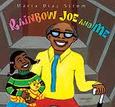
Strom, Maria Diaz. Rainbow Joe and Me . Lee & Low Books, 1999. Eloise is a young artist who loves to mix colors. She tells her neighbor, Rainbow Joe, how she combines colors. He explains that even though he is blind he can imagine colors and make them sing.
Lily McDot So Much More
Tackett, Ron. Lily McDot So Much More. 2016. This is a story told by Lily about all the different things that make her unique. At the end of the story, she reveals that in addition to all of the other things that make her Lily, she also happens to be blind. The book is designed to be accessible to children with low vision and is printed in 36 pt font black on white. It is also spaced to allow for the addition of braille.
Crystal Moonlight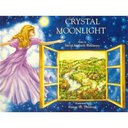
Waldman, David Kenneth. Crystal Moonlight. Rebecca House, 1990. Gale asks, "Why am I blind?" This books message is that seeing is not done by our eyes alone. One can also see with one's heart.
Living with Blindness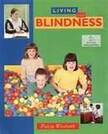
Westcott, Patsy. Living with Blindness. Austin: Raintree Publishers, 1999. Grades 1-5. This book explains how the eye works, some of the causes of blindness, and how the world looks to those with various types of visual impairment. The text briefly introduces braille, assistive technology, and mobility aids used by people who are blind.
First Grade King
Williams, Karen Lynn. First Grade King. Clarion Books, 1992. This book tells the story of first grader, Joey King who is dealing with a class bully. He gets support from his classmate, Madeline, who is visually impaired. Joey learns that people aren't always what they seem and bravery is a noble but complicated art.
The Seeing Stick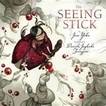
Yolen, Jane. The Seeing Stick. Running Press Kids, Reprint edition 2009. 3 and up. Hwei Min, the only daughter of the emperor of China, has been blind since birth. Her father offers a reward to anyone who can find a cure for the little girl. No one from magicians to physicians can help her. Then, one day a wise old man with a mysterious seeing stick visits the princess. He teaches Hwei Min that there is more than one way to see the world.
|
History of Visual Impairments
Professional Practice
Vision Professionals
Professionalism
Teacher Resources
Professional Publications
VI Book Resources
|
|
Teaching Students with Visual Impairments LLC
All Rights Reserved |
- Home
-
Learn
- History of VI >
- Legislation & Laws >
- Vision Professionals >
-
VI Program Resources
>
- Program Printables
- Itinerant Teaching Tips
- Year at a Glance
- VI Program Handbook
- Caseload Analysis
- Organization & Time Management
- Professional Development
- Teacher Standards
- Professional Ethics
- Awards & Recognition
- APH Scholar Program
- Professional Organizations
- Certification Organizations
- Dealing with Challenges
- Professional Publications >
- Relatable Books for All Ages >
- Family Resources >
- Plan
- Basics
-
Teach
- Teaching Strategies >
-
Compensatory Skills Instruction
>
-
Social Skills
>
-
Self Determination
>
- Body Image & Acceptance
- Making Personal Goals
- My Vision Presentation
- My Self-Description
- Create a Personal Data Sheet
- Disclosure Decision
- Disability Statement
- Requesting Help
- Fighting Fears
- My Circle of Support
- Personal Responsibility
- Advocate for Safe Enviroments
- Having Picture Taken
- Coping with Change
- Aging Eyes
- Physical Characteristics
- Political Activism
- Laws Regarding Persons with Disabilities
-
Sensory Efficiency
>
-
Independent Living
>
- Orientation & Mobility Instruction >
- Recreation & Leisure >
-
Career & Vocation
>
-
Grow
- Complete Set Bonus >
-
Recorded Presentations
>
- Webinar: Tips for Being a "Physically Fit" TVI
- Webinar: The Art of Teaching the ECC
- Webinar: Virtual & F2F Strategies
- Webinar: Foundations of Teaching the ECC in the Age of Virtual Instruction
- Webinar: Itinerant Teaching Strategies
- Webinar: Using Themes to Teach the ECC
- Webinar: Conducting a FVLMA
- Webinar: Selecting the Right AT
- Webinar: Developing SMARTER Goals
- Webinar: Determining Service Intensity Using the VISSIT
- Webinar: Activities to Teach the ECC
- Webinar: Accessible Content for BLVI
- Webinar: Accommodations for VI
- Webinar: MIMO Strategies & Activities
- Webinar: SIDPID Strategies & Activities
- Webinar: Standard Course of Study Strategies & Activities
- Webinar: Job Tasks for Job, Career & Life
- Shop
- Jobs
